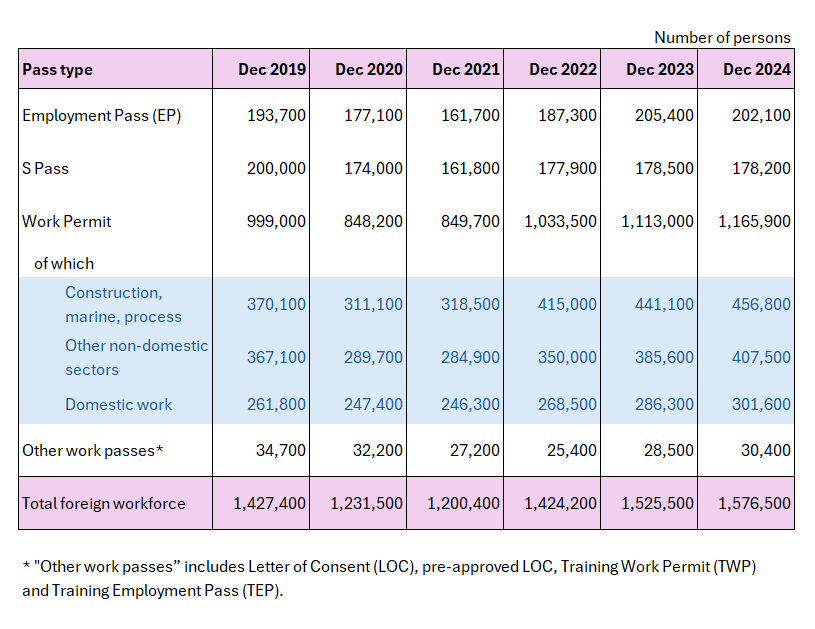
Without foreign labour, Singapore would not have any new lines for our Mass Rapid Transit (MRT) system
The Ministry of Manpower publishes a brief set of numbers regarding the number of work passes as at 31 December of each year. Each annual publication only provides data for six preceding years, and replaces the previous year’s table. As a result, data for earlier years are erased with every update.
Moreover, there is hardly any useful granularity about the data. For example, there is no information about occupations beyond broad categories like “CMP” which stands for construction, marine and process engineering combined. We can’t even tease out how many construction workers there are from CMP. There are no numbers for manufacturing or conservancy (better known as town council cleaners).
Nor are there numbers by nationality, age or gender.
Poor quality notwithstanding, to safeguard against future loss of even this available information, it is important that we archive here the data for the six years up to 2024 before the information is buried as years pass. These numbers are from the Ministry of Manpower. It may seem superficial, but this is all there is.

Using the above numbers, we can can obtain percentages. The table on the left shows percentages in relation to the total number of work passes. The smaller table on the right shows percentages amongst Work Permit holders. It is extremely frustrating that there is no further granularity to them.

Singapore falls far short of the expectations set out in the United Nations’ Global Compact for Migration. The very first objective (paragraph 17), for example, says:
We commit to strengthen the global evidence base on international migration by improving and investing in the collection, analysis and dissemination of accurate, reliable and comparable data, disaggregated by sex, age, migration status and other characteristics relevant in national contexts, while upholding the right to privacy under international human rights law and protecting personal data. We further commit to ensure that this data fosters research, guides coherent and evidence-based policymaking and well-informed public discourse, and allows for effective monitoring and evaluation of the implementation of commitments over time.
Subsection (h) of paragraph 17 further adds:
… and make collected data available through public use of statistical microdata files;
For a government that is proud that policy-making is data-driven, the paucity of published data regarding migration is inexplicable.
